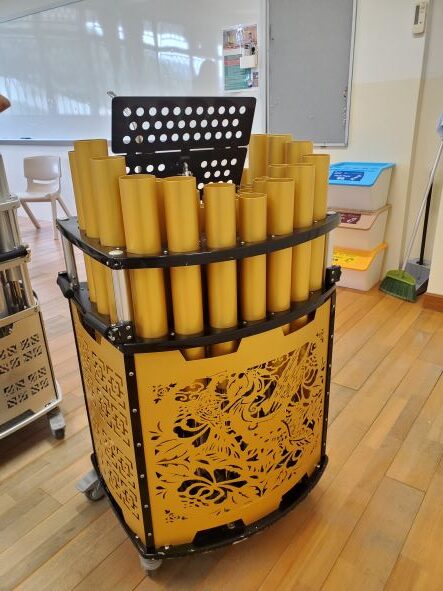The Pipe Organ in China Project: Updates for November 2022
30 November 2022There are no updates to organs this month, but two events to report on which involve aspects of the research carried out by the Project.
The Hong Kong Hymnos Festival, founded in 2020, hosted a concert by the choir, Vox Antiqua, on 12 November 2022 at the Chapel of St. Ignatius (seats 550!) at historic Wah Yan College, Kowloon. A program of works based on the information contained in the letters of Father François Ravary, recently edited and published by Prof. Urrows, was performed: Jesuita Cantat: Music from the Jesuit Missions of Shanghai ca. 1860. Music by Ravary’s teacher, Louis Lambillotte SJ (1797-1855), and by his friend Hippolyte Basuiau SJ (1824-86), as well as Alfred Roland, César Franck, and Ernest Gagnon was performed. The main work was the Messe solenelle en style grégorien du Ve mode by Lambillotte (1854), performed for the first time in Prof. Urrows’ reconstructed edition. Three readings were given of excerpts from Fr. Ravary’s letters.
Father Ravary was the ‘mastermind’ behind the bamboo organs of Shanghai, including SHA1857, SHA1858, SHA1859, SHA1861, SHA1862, and SHA1881, which he designed and which were constructed by Brother Léopold Deleuze (1818-65).
As Lambillotte, Franck, and Deleuze were Belgian, the concert was honored by the presence in the audience of the Belgian Consul General in Hong Kong, Mr. David Lomastro, and his wife, as well as Belgian Consul Eva Morre.
On another topic, Prof. Urrows was recently invited to Good Hope School at Choi Hung, Kowloon, Hong Kong. He writes:
“Two of my former students teach at Good Hope School, and among other things they have a strong program in Chinese music and a sheng (笙) ensemble there. Father Ravary loved the sheng, although he couldn’t decide what its relationship to Western instruments of a free-reed type was (the relationship is tenuous and has been greatly exaggerated; and the sheng has no connection at all to the Western pipe organ).
“The small, traditional sheng which Ravary knew is now a kind of folk instrument. Technology has taken over, and following Western models has created an entire family of sheng of different pitch levels (soprano, alto, tenor, bass). The larger ones, in some instances (there is no standardization yet of the design of large sheng) start to take on aspect of a ‘steampunk harmonium’. I enjoyed hearing, among other things, the Hungarian Dance No. 5 by Brahms, arranged for sheng ensemble! Below are a few photos of my visit, with explanatory captions.”
Top 10 countries, November 2022:

Organs in the Census: 199
Hits this past month: 861

Apsara playing a traditional sheng, 8th C.

Alto sheng, front view. The upright tubes are resonators, not pipes.

Back view, showing bocal.

Back view, with panel removed showing elaborate wind tubes

A student playing the alto sheng. The key system is the same as on the hand-held soprano concert sheng.